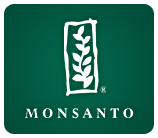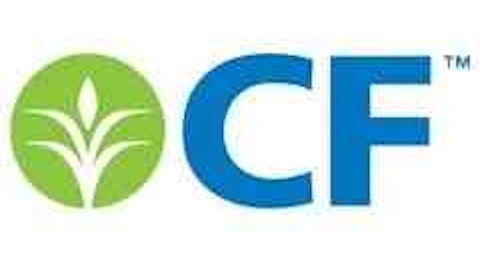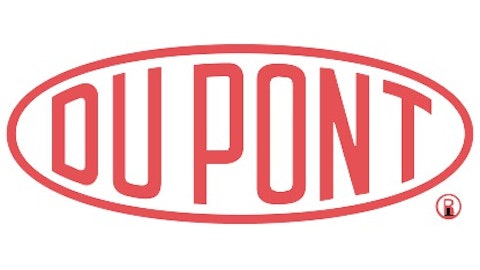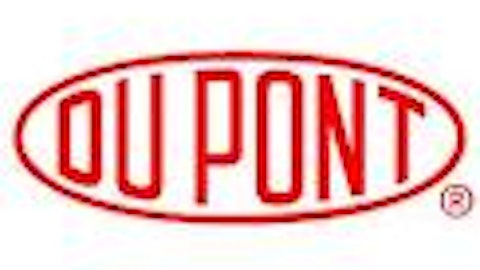Last week, over 2 million protesters in 436 cities across 52 countries rallied against agricultural giant Monsanto Company (NYSE:MON) and genetically modified crops. While I haven’t been a big fan of some of Monsanto’s business practices, as I have outlined in the past, I believe that these protests have sent the wrong message regarding GMOs (genetically modified organisms) and the genetically modified seeds industry in general.
Despite the constant vilification of Monsanto Company (NYSE:MON), and to a lesser extent, its peers Syngenta AG (ADR) (NYSE:SYT) and E I Du Pont De Nemours And Co (NYSE:DD), these agricultural companies produce ingeniously engineered seeds that are able to withstand herbicides, grow in arid environments, and produce higher yields. These three qualities will all be increasingly important as the world’s population, now at 7 billion, rises to an estimated 9 billion by 2050. With all those extra mouths to feed – which will coincide with a rapid decrease in the amount of arable land – farmers will need all the help they can get to produce staple crops such as soybeans, corn and cotton at profitable margins.
Therefore, are protesters right to demand that food companies that use GMOs label their products accordingly, which could spook consumers and lead to sales declines, or are GMOs merely scientifically improved products that are as safe for human consumption as their naturally grown peers? Should we be thankful for the new products that genetically modified seed companies have created, or should we be fearful of the long-term implications of their continued dominance of the agricultural industry? Let’s take a look at both sides of the argument.
What the critics claim
The critics tend to highlight a supposedly shocking fact – that Monsanto Company (NYSE:MON), along with The Dow Chemical Company (NYSE:DOW), created Agent Orange, the highly toxic herbicide that was used during the Vietnam War to clear forests to deprive enemy guerrilla soldiers of their cover. That herbicide, they argue, eventually evolved into Monsanto’s Roundup herbicide (glyphosate), the company’s best-selling product that is paired up with “Roundup Ready” genetically modified seeds. Roundup Ready seeds are resistant to Roundup herbicide, which makes clearing weeds an extremely efficient task.
Yet the critics claim that this technology has unknown health risks, which have beenhighlighted by independent scientific studies. Glyphosate has also been found to contaminategroundwater, leading to the increased risk of human consumption.
The FDA’s official position is that GMOs are safe and carry no adverse health risks. The reason for this opinion, Monsanto Company (NYSE:MON)’s opponents claim, is that Monsanto executives have a symbioticrelationship with the FDA, in which former Monsanto executives often hold on to high-ranking positions in the FDA to ensure that favorable legislation is passed. For example, FDA deputy commissioner of the Office of Foods Michael R. Taylor was once the Vice President of Public Policy at Monsanto. Therefore, even though 64 countries around the world require GMO labeling, the United States still only encourages voluntary labeling.
Monsanto Company (NYSE:MON) has also been criticized for suing farmers that violated its seed saving rules. Under Monsanto’s contracts, farmers are not allowed to save seeds from current crops and replant them, and must purchase new seeds every season. For Monsanto, it is a matter of patent protection, but for most of the farmers that it has sued, it usually results in total bankruptcy.
For critics, Monsanto Company (NYSE:MON) has all the characteristics of an “evil corporation” – allegedly producing unsafe products, controlling governing bodies, and burying individuals over contract violations. But that’s only half the story.
What the GMO companies think
What GMO critics don’t realize is that a world without Monsanto, E I Du Pont De Nemours And Co (NYSE:DD) and Syngenta AG (ADR) (NYSE:SYT) would be a radically different one.
The recent drought in the Great Plains, which some believe to be the result of climate change, would have made planting corn impossible if it weren’t for drought-tolerant seeds from E I Du Pont De Nemours And Co (NYSE:DD). Last quarter, DuPont reported brisk sales of its Optimum AQUAmax corn, which can grow in drier conditions. Demand for these products boosted DuPont’s agriculture segment 14% year-on-year to $4.67 billion, accounting for 45% of the company’s top line.
Monsanto Company (NYSE:MON), in contrast, lacks a viable drought-resistant corn seed, after its original attempt failedin 2012. Monsanto is currently working on a new drought-resistant corn seed with chemical giant BASF. For now, Monsanto’s strength in corn comes from Bt, a pesticide that grows directly in the crop and later breaks down upon being reaped. Monsanto and Syngenta AG (ADR) (NYSE:SYT) notably produce “triple stacked” corn, which is resistant to corn borers, corn rootworms, and herbicides.
This focus on corn makes a lot of sense, considering that the price of corn has risen 180% over the past decade. Without GMOs, corn prices – which are connected to soda, snack, cereal, bio-fuels and meat prices – would skyrocket. Therefore, GMO companies keep crop prices (which are already heavily subsidized) under control and allow farmers to continue making profits. This explains the U.S. government’s unwavering support of Monsanto Company (NYSE:MON) – the alternative to GMO crops would be unshackled food inflation that would cripple the country’s food chain and force the government to raise subsidies.
Therefore, chemical companies believe that they are providing invaluable products to the world. To protect their products’ profitability, they are taking all necessary measures to ensure that their technologies are not copied – a stance that has been supported by software companies, who often face the same copyright problems as Monsanto. Although Monsanto’s cases against individual farmers over the past decade have been widely publicized due to the “David vs. Goliath” nature of the conflicts, a vast majority of farmers have profited from their deals with Monsanto.
Protecting the product
Moreover, the majority of Monsanto Company (NYSE:MON)’s litigation has been focused on its industry peers, such as E I Du Pont De Nemours And Co (NYSE:DD) and Syngenta AG (ADR) (NYSE:SYT), and not individuals. In 2009, DuPont created the Optimum GAP soybean seed, which was engineered to withstand glyphosate – the key ingredient in Monsanto’s Roundup herbicide. Although DuPont never commercially sold these seeds, Monsanto sued DuPont for patent violations. DuPont and Monsanto eventually came to a licensing agreement, in which the former would pay the latter $1.75 billion over the next decade to sell its glyphosate-resistant soybeans.
Back in 2008, E I Du Pont De Nemours And Co (NYSE:DD) reached a similar agreement with Syngenta AG (ADR) (NYSE:SYT), in which the two companies cross-licensed their herbicide-resistant technologies. Other companies, such as The Dow Chemical Company (NYSE:DOW) and Novartis AG (ADR) (NYSE:NVS), also pay licensing fees to sell Monsanto’s genetically modified seeds.
Lastly, GMO crops are not all designed for maximum profitability and efficiency. Monsanto’sgolden rice was engineered to be loaded with Vitamin A to address malnourishment and vitamin A deficiency in developing countries, which can cause blindness. Proponents claim that golden rice is proof that GMO products can have lasting positive impacts on a growing global population.
The Foolish Bottom Line
Like any controversial topic, the GMO debate is not a simple black-and-white matter. Rather, the whole issue is steeped in gray. Here are some questions to ponder before making a snap judgment about the industry.
If we really didn’t have companies such as Monsanto Company (NYSE:MON), how much would we be willing to pay for corn, soybean and cotton products as their prices skyrocket? How many farmers would be wiped out when another drought hits and our government discovers that it has run out of funds to subsidize the farming industry? How will we address the problem of unsustainable population growth?
Leo Sun has no position in any stocks mentioned. The Motley Fool has no position in any of the stocks mentioned.
The article The Two Sides of the GMO Debate originally appeared on Fool.com.
Copyright © 1995 – 2013 The Motley Fool, LLC. All rights reserved. The Motley Fool has a disclosure policy.




